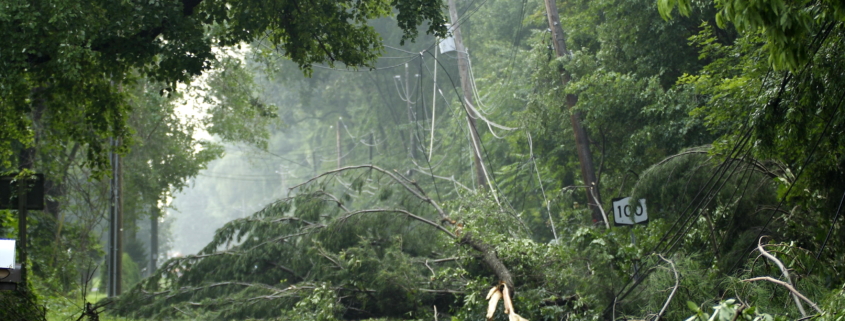Trimming Trees: A Key to Lower Electric Rates
Did you know that trimming trees around power lines can keep your electric rates lower? Overgrown trees lead to power outages and costly repairs, so the team at your local cooperative works hard to maintain the growth of vegetation near its infrastructure. Here are a few ways that these investments save you money in the long run.
Prevention of Power Outages. One of the primary reasons why tree trimming is essential is its ability to prevent power outages. Trees growing too close to power lines will cause outages when branches come into contact with the lines during storms or high winds. By regularly trimming trees, co-ops can minimize the risk of branches falling onto the lines and causing power outages. This proactive approach to tree maintenance helps ensure a more reliable electrical grid, reducing the need for emergency repairs and ultimately lowering maintenance costs.
Improved Reliability. Trimming trees around power lines not only prevents outages but also improves service reliability. Overgrown trees and branches can create intermittent faults, resulting in brief power interruptions. By keeping trees trimmed and maintaining a clear distance between branches and power lines, utilities can provide a more stable and reliable power supply, improving customer satisfaction and reducing the need for costly equipment repairs or replacements.
Decreased Maintenance Costs. Regular tree trimming near power lines leads to decreased maintenance costs for your cooperative. When trees grow too close to power lines, they may require more frequent inspections and trimming, which can be time-consuming and expensive. By maintaining a safe distance between trees and power lines through proactive trimming practices, co-ops reduce the frequency of maintenance visits, lowering labor and equipment costs. These savings can then be passed on to consumers, contributing to lower electric rates.
Mitigation of Safety Hazards. Trimming trees near power lines also helps mitigate safety hazards. Overgrown trees can pose a significant risk to public safety if they come into contact with power lines, potentially leading to electrocution or fires. By proactively managing vegetation around power lines, utilities can minimize these risks, ensuring safety for both the community and our crews. This reduces the likelihood of accidents and the associated costs of emergency response and potential liability claims.
Regular tree trimming near power lines plays a crucial role in maintaining a reliable electrical grid, preventing outages, improving service reliability and reducing maintenance costs. By performing proper vegetation management on the power system, your local cooperative can contribute to lower electric rates while ensuring a safer and more efficient energy infrastructure for all.





Leave a Reply
Want to join the discussion?Feel free to contribute!